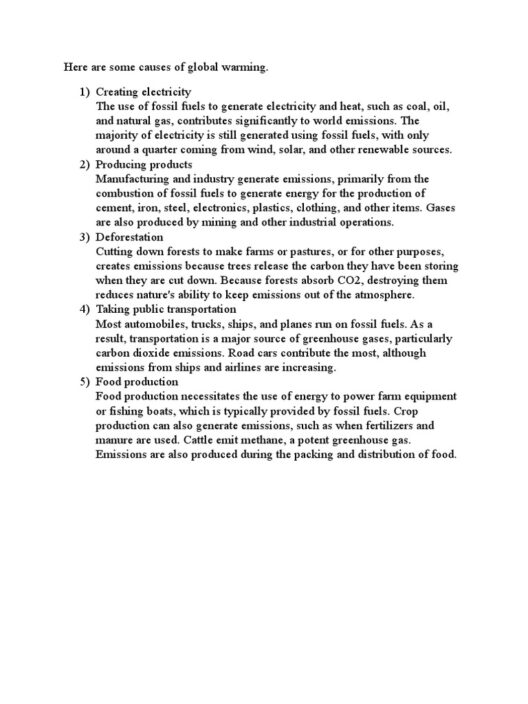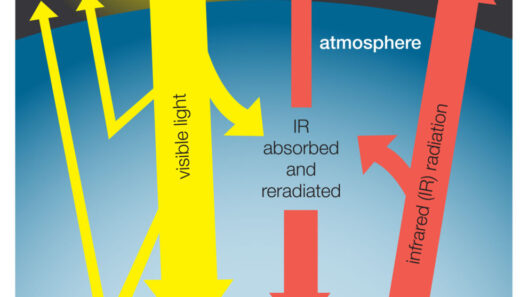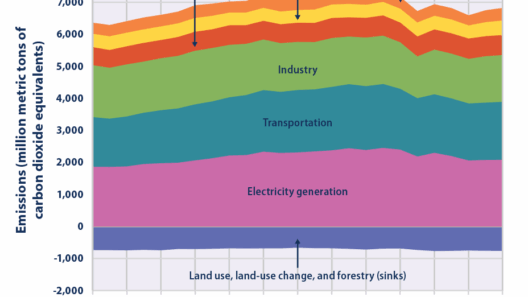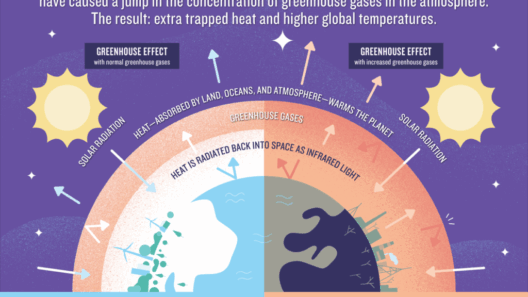Understanding the Process of Heat Trapping in the Atmosphere
What if you could feel the warmth of the sun through a thick, cozy blanket, even on a chilly day? This simple metaphor captures the essence of the greenhouse effect and heat trapping in our atmosphere. To explore this fascinating phenomenon, it is essential to delve deeper into how our atmosphere functions as a protective shield, retaining heat that supports life on Earth. However, this very blanket that provides warmth may also pose a challenge—an escalation in global temperatures that threatens our planet’s delicate balance. Herein lies the intricate interplay of atmospheric dynamics and climate change.
Grasping the Greenhouse Effect
The greenhouse effect is the primary mechanism whereby certain gases in our atmosphere trap heat. It starts with the sunlight radiating toward the Earth. Most of this sunlight reaches the surface, where it is converted into infrared radiation, or heat. While some heat escapes back into space, greenhouse gases (GHGs), such as carbon dioxide (CO₂), methane (CH₄), and nitrous oxide (N₂O), absorb and re-radiate some of that energy, preventing it from dispersing into the cosmos. This pivotal process maintains our planet’s temperature at a level conducive for life.
Yet, as human activities alter the natural balance of these gases, the fortress of the atmosphere thickens, trapping more heat over time. The complexity of the greenhouse effect serves not only as a life-sustaining mechanism but also as a catalyst for impending environmental challenges.
The Role of Atmospheric Constituents
Each constituent of the atmosphere plays a specific role in the heat trapping process. Let’s dissect the crucial players:
Water Vapor: The most abundant greenhouse gas, water vapor acts as a natural thermostat. It can amplify warming since warmer air holds more moisture, leading to a feedback loop. This enhancement means that as temperatures climb, more water vapor enters the atmosphere, which in turn traps even more heat.
Carbon Dioxide: Perhaps the most discussed greenhouse gas, CO₂ levels have surged due to the burning of fossil fuels and deforestation. Although it comprises a smaller fraction of the atmosphere, its long-lived nature means that once released, it can linger for centuries, exacerbating its heat-trapping potential.
Methane: Despite being less abundant than CO₂, methane is a formidable greenhouse gas. Its potency as a heat trapper is over 25 times that of carbon dioxide over a 100-year period. Methane emissions primarily come from agriculture, waste management, and fossil fuel extraction, presenting a significant challenge in mitigating climate change.
Nitrous Oxide: Released primarily from agricultural practices, nitrous oxide is effective at heat retention. It is a lesser-known player but has a global warming potential that is roughly 298 times that of CO₂, making it essential to address its sources to curb atmospheric warming.
Feedback Loops and Climate Change
Now that we understand the role of various greenhouse gases, it’s crucial to recognize how feedback loops intensify the effects of heat trapping on our climate. As temperatures rise:
– Polar ice caps and glaciers melt, reducing the Earth’s albedo effect (its ability to reflect sunlight). This leads to further warming, as darker ocean water or land absorbs more heat.
– Permafrost thaws, releasing stored methane—a double-edged sword that accelerates the very process we are trying to mitigate.
These feedback mechanisms reveal how a relatively minor increase in temperature can spiral into significant climatic shifts, complicating our efforts to stabilize global temperatures.
Mitigation Strategies to Address Heat Trapping
Combating the heat-trapping phenomenon requires a multi-faceted approach:
Transitioning to Renewable Energy: Shifting from fossil fuels to renewable energy sources like solar, wind, and hydroelectric can drastically reduce GHG emissions. We must grow our investment in technology that harnesses clean energy to foster a sustainable future.
Enhancing Carbon Sequestration: Promoting reforestation and sustainable agricultural practices can enhance the natural absorption of CO₂ from the atmosphere. Wetlands, for instance, serve as potent carbon sinks and must be preserved while implementing green agricultural practices.
Innovative Technology: Investment in carbon capture and storage (CCS) technology offers a pathway for removing CO₂ from industrial emissions. Further research and development can lead to breakthroughs in reducing greenhouse gas concentrations in the atmosphere.
Individual Responsibility: While systematic change is necessary, personal accountability plays a role. By reducing energy consumption, minimizing waste, and supporting environmentally friendly policies, individuals can contribute significantly to combating climate change.
The Playful Challenge of Tomorrow
Are you ready to co-create with nature instead of against it? The challenge lies in examining our daily habits and choices and confronting the question: how can I contribute to a healthier atmosphere? The answers may vary, but collective action can lead us toward a sustainable equilibrium, safeguarding our planet for generations to come.
In summary, understanding the intricate process of heat trapping within Earth’s atmosphere reveals not only its role in maintaining life but also the urgent need for our attention and action. By deciphering the complexities of greenhouse gases, feedback loops, and mitigation strategies, we can pave the way for a restored climate through innovative thinking and communal responsibility. The journey toward a sustainable future beckons, and it begins with our choices today.







